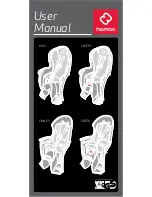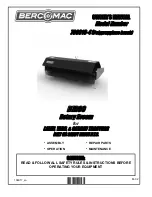
Installation
Manual_Grid_Power_FNC_en_V3_0
27
8.
Installation
DANGER!
Risk of serious injury or death caused by high voltages and electric shocks.
Metallic parts of the batteries are always live. High current flow occurs if there is a short-circuit.
Be very careful when doing any work on the batteries in order to prevent severe injuries
caused by electrical shocks or burns.
Never place tools or other metallic objects on a battery.
Remove watches and jewelry before doing any work on the batteries.
Do not touch any exposed battery parts, connectors, terminals or poles.
Use insulated tools and wear personal protective equipment.
8.1.
Mounting a Rack or Cabinet
8.1.1.
Before Mounting a Rack or Cabinet
Before starting assembly it must be ensured that the battery room is clean and dry and has
a door which can be closed. The battery room must be provided with warning signs
conforming to DIN EN IEC 62485-2 (see also
2.3.3 Protection against dangerous body
contact currents on page 11
).
Particular attention should also be paid to the following:
Ensure correct floor loading and floor quality (access routes and battery room)
Ensure that the mounting surface (floor of the battery room or electrolyte tray) is resistant
to electrolyte
Protection against sources of ignition (naked flame, glowing matter, electrical switches)
in the vicinity of the cell opening, 500 mm “filament distance” as specified in DIN EN IEC
62485-2
Ensure adequate ventilation according to DIN EN IEC 62485-2
Agreement with other persons working in the same room (ensures trouble-free
installation).
HOPPECKE will be pleased to help you in procuring suitable racking.
8.1.2.
Checking the Scope of Delivery
Check all goods delivered for completeness and for any signs of damage.
Clean all parts if necessary.
Note and follow the accompanying documentation. This documentation should comprise an
assembly drawing for the rack or cubicle, together with battery connection instructions. If the
documents required for correct assembly of the rack are missing, please follow the project
documentation or ask for this before starting assembly.
Only undamaged cells may be used, since otherwise the whole battery may be adversely
affected by escaping electrolyte.
















































